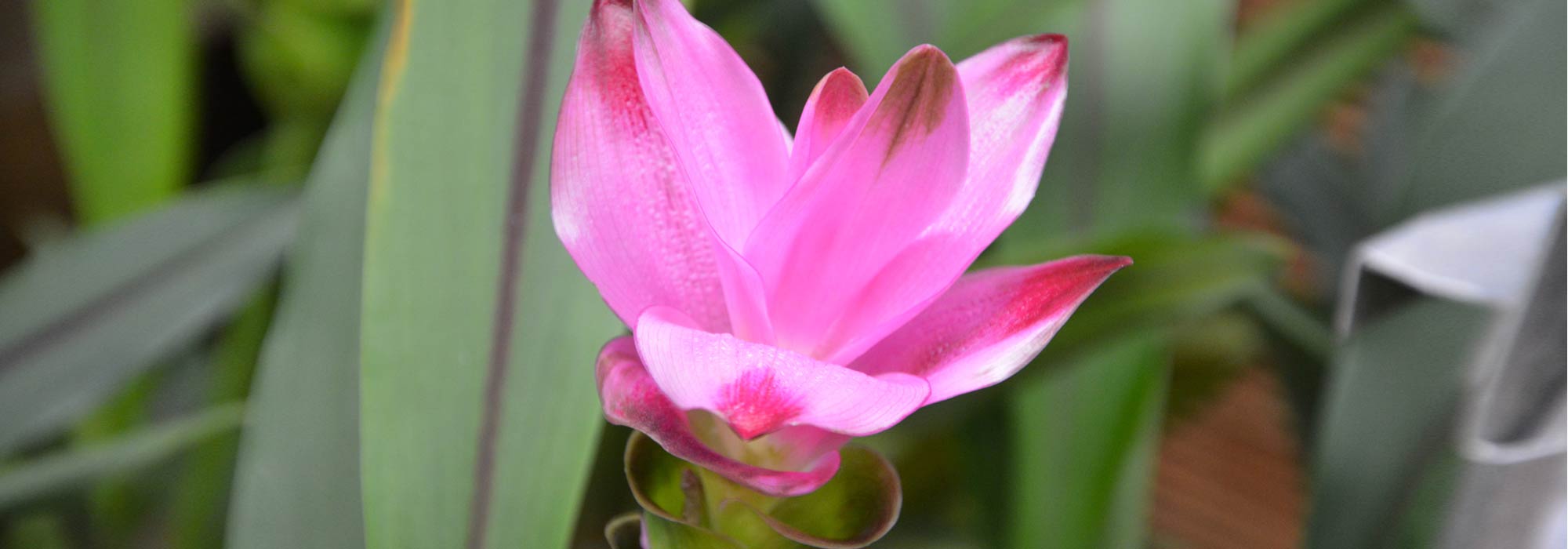
Turmeric: planting, harvest, benefits
Contents
Turmeric in a nutshell
- Turmeric is a herbaceous rootstock plant from the same family as ginger.
- Curcuma longa is a culinary plant with medicinal properties, while Curcuma alismatifolia is a non-edible ornamental plant.
- An orange and peppery spice is extracted from the rootstock of Curcuma longa, which also has medicinal properties.
- Little or not at all hardy, turmeric rootstocks must be wintered. This plant can be grown both in the ground and in pots.
- Turmeric is not very demanding, except that it requires well-draining soil, warmth, and regular watering.
A word from our expert
Turmeric is a herbaceous perennial plant from the same family as ginger. It is the source of the spice of the same name, which is obtained from its rootstock. In addition to this culinary form, there are also ornamental varieties, which are grown solely for their beautiful ensate leaves and summer flowers.
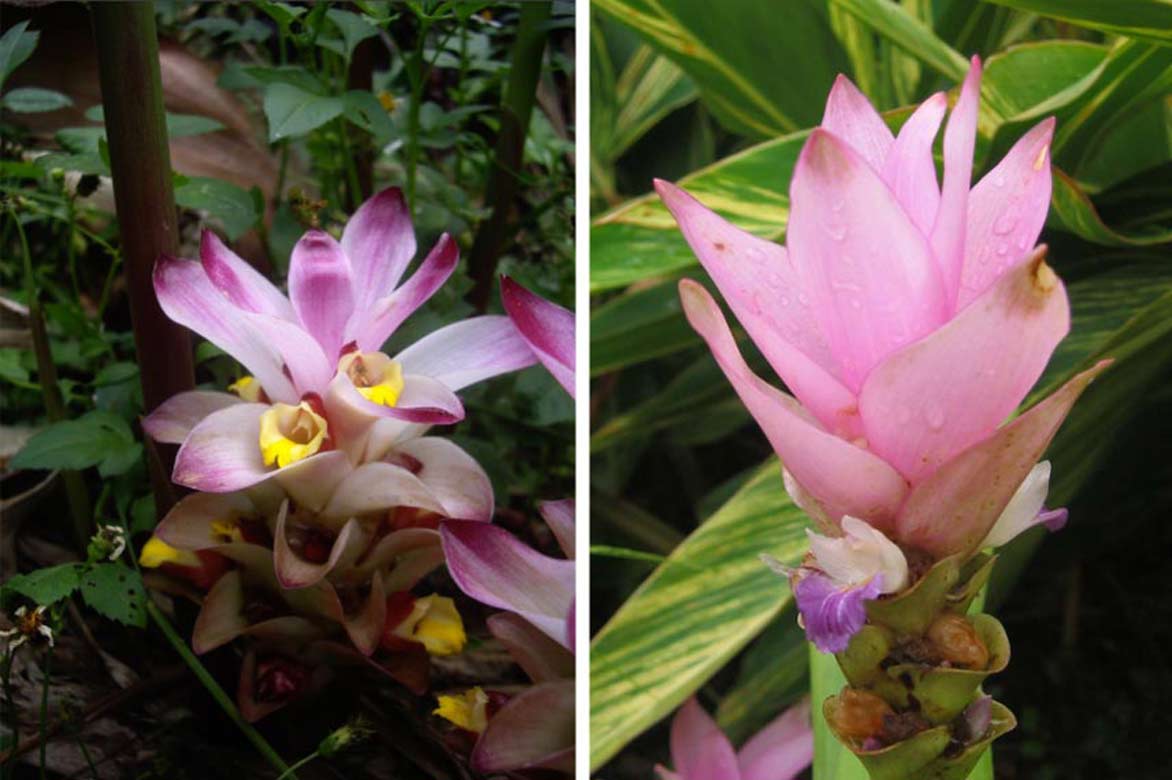
Curcuma longa © Bernhard Hiller – iNaturalist | Curcuma alismatifolia © QG d’Aqiao – Flickr
The culinary turmeric, Curcuma longa, is widely used in cooking, as it forms the base of curry. It is, however, rarely cultivated in our latitudes, but is widely spread in India, China, Taiwan, Japan, Myanmar, Indonesia, and Africa. The spice, with its peppery flavour, derived from the plant’s rootstock, has a yellow colour and is used in powdered form. In addition to its culinary qualities, turmeric is also used in phytotherapy for its antioxidant and anti-inflammatory benefits, earning it the nickname “the magic spice.”
In France, the species of turmeric cultivated for ornamental purposes are primarily Curcuma alismatifolia. Non-edible, these do not possess the flavour or medicinal properties of Curcuma longa, but they offer a spectacular flowering display.
Description and botany
Botanical data
- Latin name Curcuma longa, Curcuma alismatifolia
- Family Zingiberaceae
- Common name turmeric, Indian saffron, poor man's saffron, Siam tulip, Thai tulip
- Flowering June to July or July to August (depending on the species)
- Height 1 m
- Exposure sunny to partially shaded
- Soil type fertile, well-drained, cool and loose
- Hardiness not hardy to -5°C (depending on the species)
The genus Curcuma includes approximately 40 species of tuberous or rhizomatous perennials, native to tropical Asia or northern Australia. These herbaceous plants belong to the Zingiberaceae family, like ginger, galangal, grains of paradise, and cardamom.
There are two forms of curcuma, namely the culinary and medicinal plant, and the ornamental plants.
- The species cultivated as a spice is Curcuma longa, also known as Indian saffron and poor man’s saffron. This medicinal and culinary plant produces an orange spice extracted from its rhizome. This rhizomatous perennial reaches nearly 1 m in height and 50 to 60 cm in width. The plant, composed of short stems emerging from numerous aromatic rhizomes, forms an upright clump. The cylindrical or ellipsoidal rhizome has a bright yellow to orange interior. The alternate, broad leaves are oblong to elliptical in shape. Lanceolate and heavily veined, they are sheathing at the base and can measure up to 50 cm long and 7 cm wide. In our latitudes, Curcuma longa flowers during the summer. A spike of flowers, measuring up to 20 cm long, appears at the end of the leafy stems. The sterile flowers display purple and yellow hues, surrounded by large greenish bracts when immature, turning cream-white washed with pink-violet at maturity.
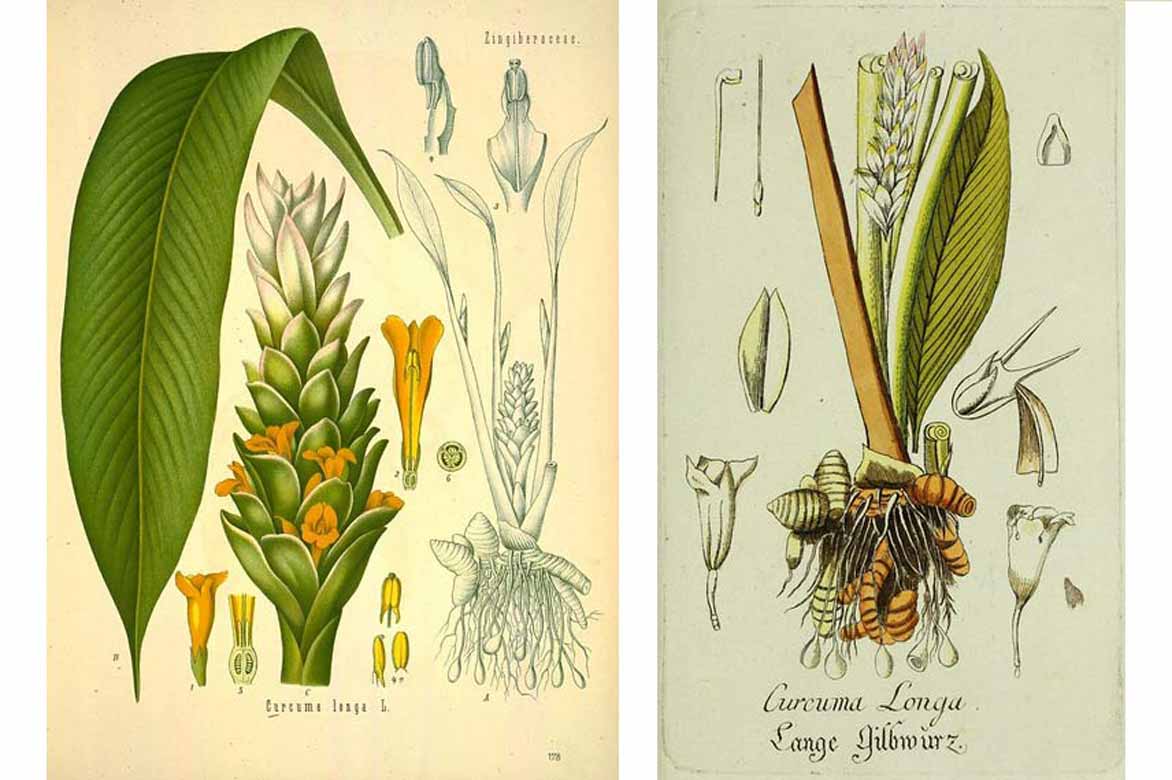
Curcuma longa © Biodiversity Heritage Library
- Among the species of curcuma most cultivated for their ornamental qualities, we find especially the Curcuma alismatifolia and its various cultivars. Curcuma alismatifolia, commonly known as Siam tulip and Thai tulip, is a rhizomatous ornamental plant that grows naturally in Cambodia, Myanmar, and Thailand. The Curcuma alismatifolia has an upright habit and sheathing, alternate, semi-evergreen sword-shaped (ensate) foliage. A multitude of bracts line the flower stem, imbricate in such a way that they unmistakably resemble scales. At their axil, small fragrant flowers measuring 2 cm in diameter appear at maturity. Depending on the cultivar, Curcuma alismatifolia can be pink, white, or violet.
Read also
7 spices to grow in the gardenMain species and varieties
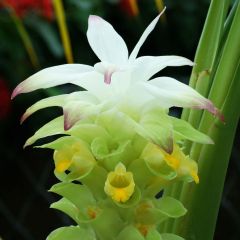
Curcuma longa - Common Turmeric
- Flowering time August, September
- Height at maturity 90 cm
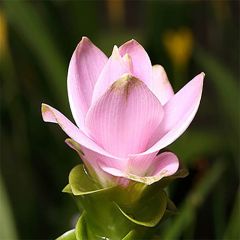
Curcuma alismatifolia Pink - Siam Tulip
- Flowering time July, August
- Height at maturity 60 cm
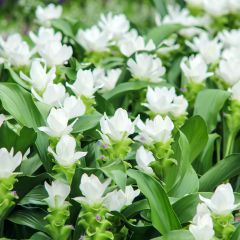
Curcuma alismatifolia White - Siam Tulip
- Flowering time July, August
- Height at maturity 60 cm
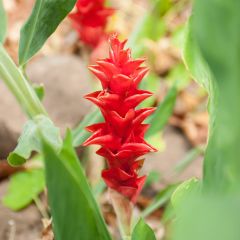
Curcuma alismatifolia Red - Siam Tulip
- Flowering time July to September
- Height at maturity 70 cm
Discover other Curcuma - Turmeric
View all →Available in 1 sizes
Available in 1 sizes

Available in 1 sizes
Available in 1 sizes
Planting turmeric rootstocks
Where to install turmeric?
- The Curcuma longa should be installed in a very sunny and sheltered location, in fertile, well-drained, and loose soil. The rhizomes of the Indian saffron can only be planted in the ground in the mildest regions of the country (in the Mediterranean or on the Atlantic coast), always protected from moisture. It can also be placed in a pot kept outdoors during the warm season and sheltered in winter.
- The Curcuma alismatifolia is best situated in a partially shaded but bright spot, in well-worked, deep soil enriched with compost. Hardy down to a maximum of -5°C, the Siam tulip is sensitive to frost and should only be planted in the ground in coastal Mediterranean or marked oceanic climates. Curcuma alismatifolia can also be grown in a pot placed outdoors from late spring and kept in a bright, frost-free shelter during winter.
Good to know: for both types, if you are growing turmeric indoors, absolutely avoid direct sunlight, which could scorch the plant’s leaves.
When to plant turmeric?
- The Curcuma longa is generally planted in April. However, it can be installed in the ground between March and May, provided that frost is no longer a concern.
- Bulbs of Curcuma alismatifolia are planted in spring, between April and May, always after the last frosts.
How to plant the rhizomes of Curcuma longa?
In the ground:
- Start by thoroughly working the soil to remove stones and pebbles.
- Enrich the soil with leaf compost.
- Then install your Indian saffron rhizomes at a depth of 5 or 6 cm.
- Keep the soil moist and mulch to help retain moisture.
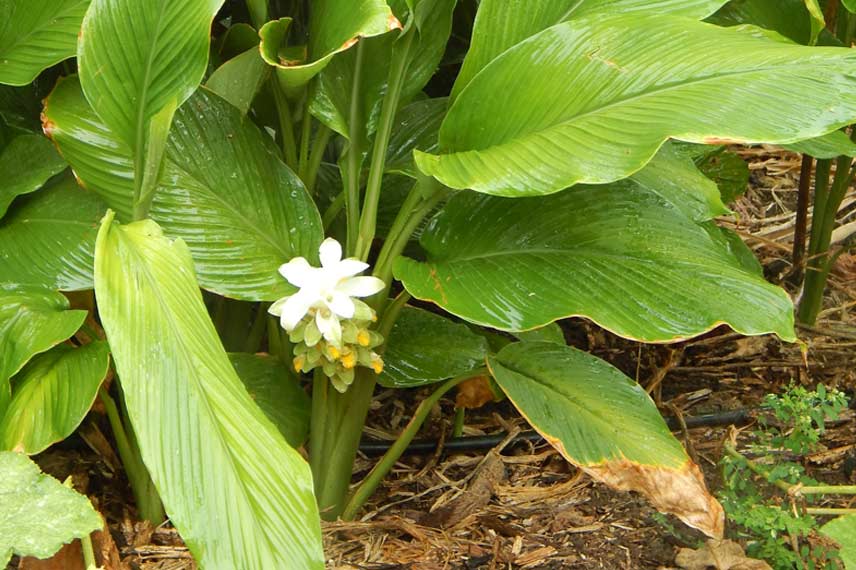
Curcuma longa © Forest and Kim Starr – Flickr
In a pot:
- Place a layer of clay balls at the bottom of the container.
- Fill the rest of the pot with a mix of 1/3 river sand to 2/3 leaf compost.
How to plant the bulbs of Curcuma alismatifolia?
In the ground:
- Plant your curcuma alismatifolia bulbs 10 cm deep, ensuring they are spaced 10 cm apart in the row.
- Be sure to mulch your turmeric rhizomes.
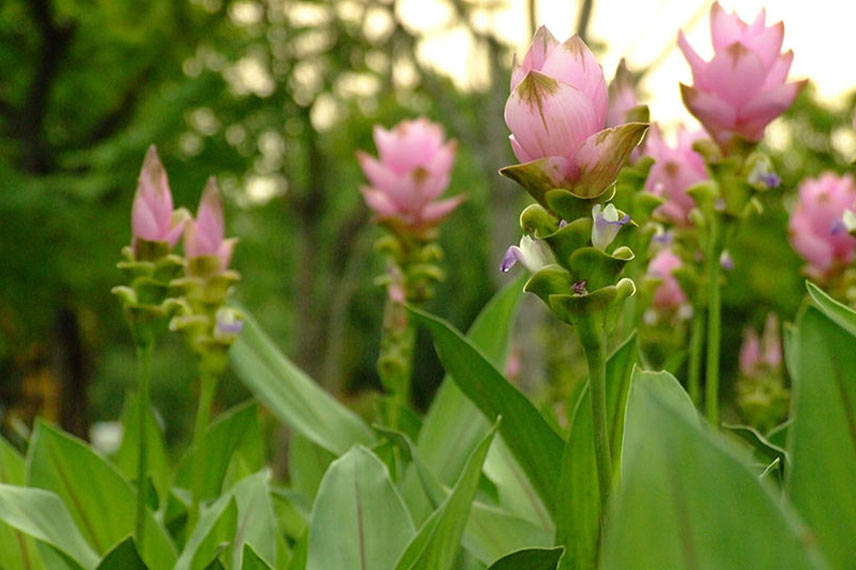
Curcuma alismatifolia © Thanyakij – Wikimedia Commons
In a pot:
- Use a 15 cm pot, and plant one single bulb per container, keeping the top part flush with the surface.
- Use a drainage layer (such as clay balls), topped with good compost.
Harvest, storage and use
The harvest
The rhizomes of Curcuma longa are harvested at the end of summer, once the foliage begins to dry out (it turns yellow) and falls.
Cut the stems at ground level to make it easier to access the rhizomes. Moisten the soil before digging up the rhizomes by hand (wearing gloves) or using a garden trowel.
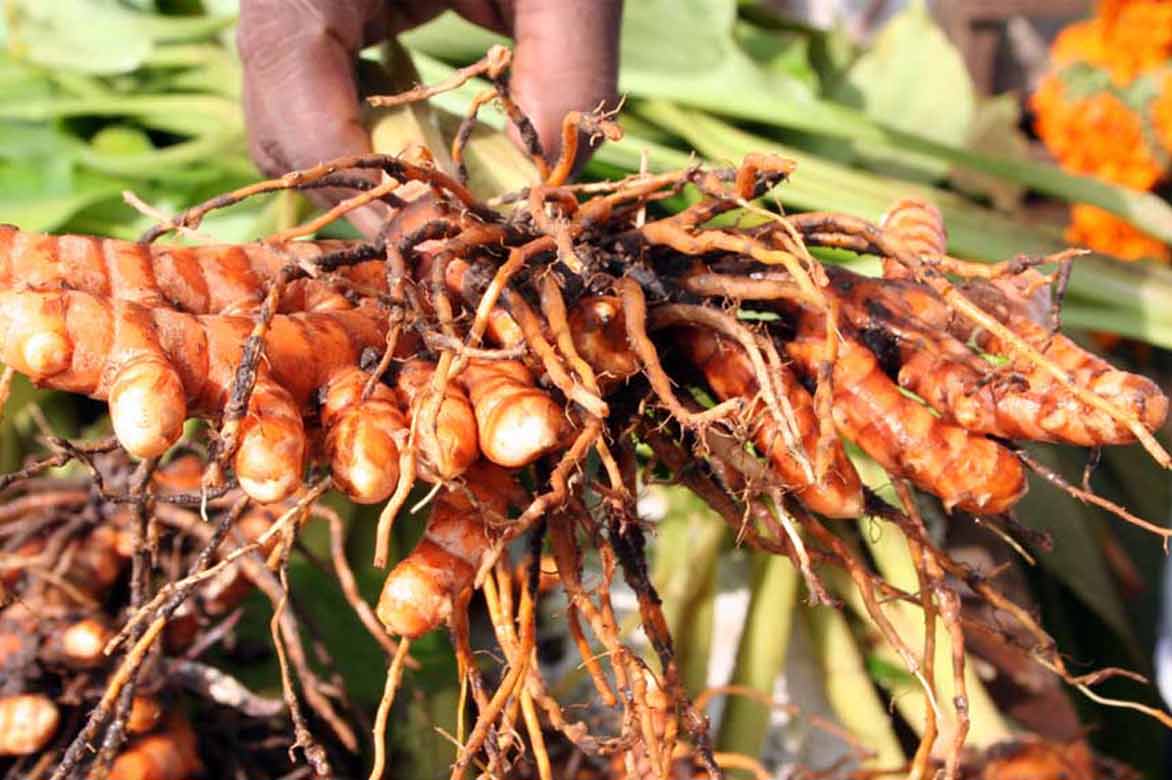
Rhizomes of Curcuma longa © vilma bharatan – Flickr
Once the rhizomes are extracted from the soil, let them rest for a few hours to stabilise their moisture content. After this time, clean the rhizomes with water to remove any mould or fungi.
Storage
To store the turmeric rhizomes, start by boiling them. Then, remove the skin, cut them into pieces, and dry them for several days in a dry place (in the sun). Once done, all you have to do is grind the rhizomes into powder. Pour this into glass jars for later use.
Culinary uses
Note that only Curcuma longa is used in cooking. In fact, all parts of the plant are edible.
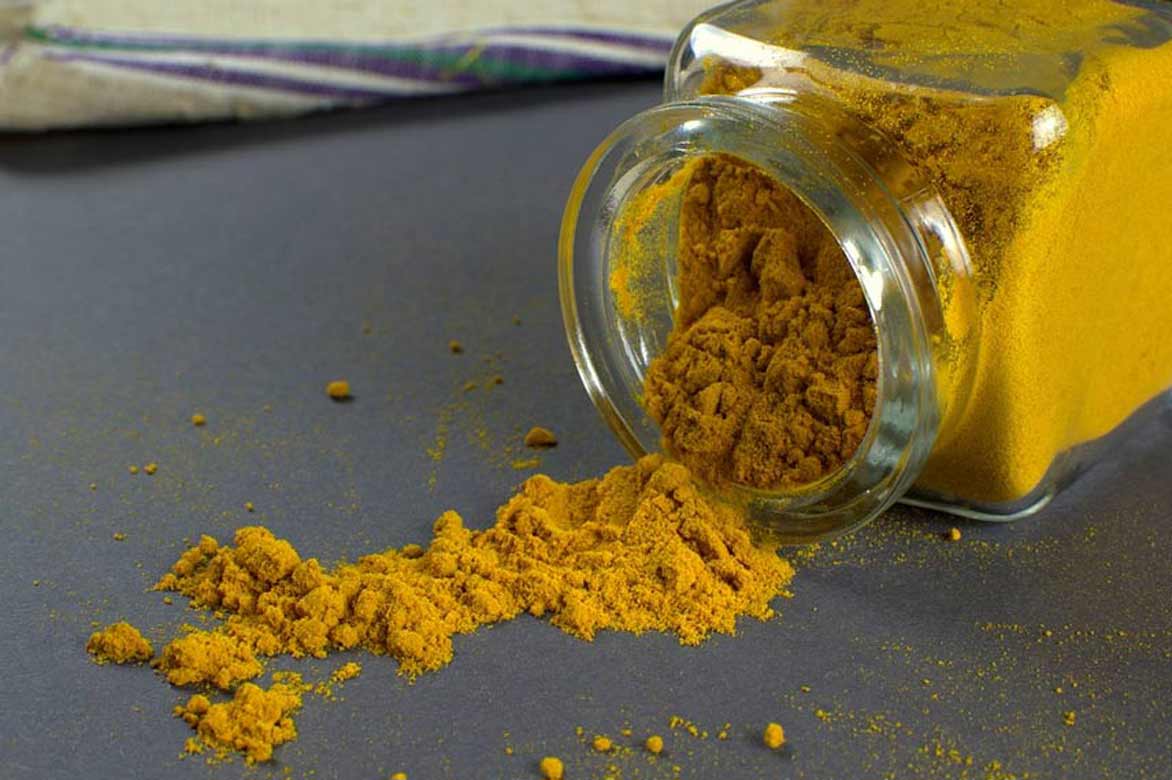
The saffron of India, in the form of bright orange powder, offers a peppery and highly aromatic flavour, and is included in the composition of curry, colombo, and ras-el-hanout.
The young shoots and flowers of Curcuma longa, which are also edible, are used in Thai cuisine. In Indonesia, the leaves are used to flavour fish dishes.
Note: turmeric powder is used by the food industry to add colour to dishes, as well as an exotic aroma.
Gwenaëlle tells you more in: How to harvest and use turmeric in cooking?
Medicinal properties and benefits
In Asia, the numerous medicinal properties of the rhizome of Curcuma longa have been known for a long time. Indeed, it is attributed with anti-inflammatory and antidepressant properties. Its antioxidant content is also believed to have preventive benefits against Alzheimer’s disease and certain cancers. Several studies are currently seeking to confirm the benefits of curcumin found in turmeric.
To learn more, also read: “Growing Turmeric for Its Health Benefits“.
Contraindications
The consumption of powder, dried roots, and fresh roots of turmeric is generally safe. However, be cautious with highly dosed tablets and supplements. Ensure you follow the instructions on the label, and consult a healthcare professional.
Note that turmeric may have some contraindications for individuals suffering from liver disease, obstructions, and gallstones, those showing signs of allergy to this plant, or those who are to undergo medical procedures or dental extractions within 15 days. In such cases, medical advice is again recommended.
Finally, do not consume high doses of turmeric if you suffer from stomach or duodenal ulcers.
Textile use
As a dye plant, the saffron of India is traditionally used to dye the robes of Buddhist monks.
Turmeric care
Care of Indian saffron
The Curcuma longa is a plant native to southern Asia. It is therefore perfectly adapted to the monsoon, thriving in climates that offer only two seasons: a dry season (rest period) and a rainy season (growth and flowering period).
Indeed, the annual growth of Indian saffron requires a lot of water throughout its growth period, which lasts from spring to the end of summer in our latitudes. In contrast, the plant needs dry soil during the entire winter period, which corresponds to its rest period.
In our regions, it is recommended to extract the rhizomes from the soil in autumn, to place them in a dry space protected from frost (similar to dahlias).
Each year, in spring, it is advisable to add compost or well-decomposed manure to your Curcuma longa plants.
Pot care
If you are growing it in a pot and indoors, remember to regularly mist the foliage of Indian saffron to prevent it from suffering too much from the dry atmosphere. Indeed, the plant needs a humid environment even when grown in a pot. Provide it with liquid fertiliser for geraniums, about once a month until the end of August, or even into September. Stop all watering and fertilising from September, when the foliage begins to yellow.
Care of Thai tulip
Like its cousin, the Curcuma alismatifolia is sensitive to frost. Its rhizomes can however be left in the ground if you live in regions where winter temperatures do not drop below -5°C (Mediterranean and oceanic climates). A good layer of mulch is then necessary to protect them from the cold.
However, if you live in an area with harsh winters, proceed as with Curcuma longa by digging up the rhizomes before the first frosts, to keep them cool and dry throughout the winter.
Pot care
Growing the Thai tulip is also possible in a pot, provided you offer it quality potting soil, regularly enriched with fertiliser. In winter, shelter your pots of Curcuma alismatifolia to protect them from frost, and bring them out again at the end of spring.
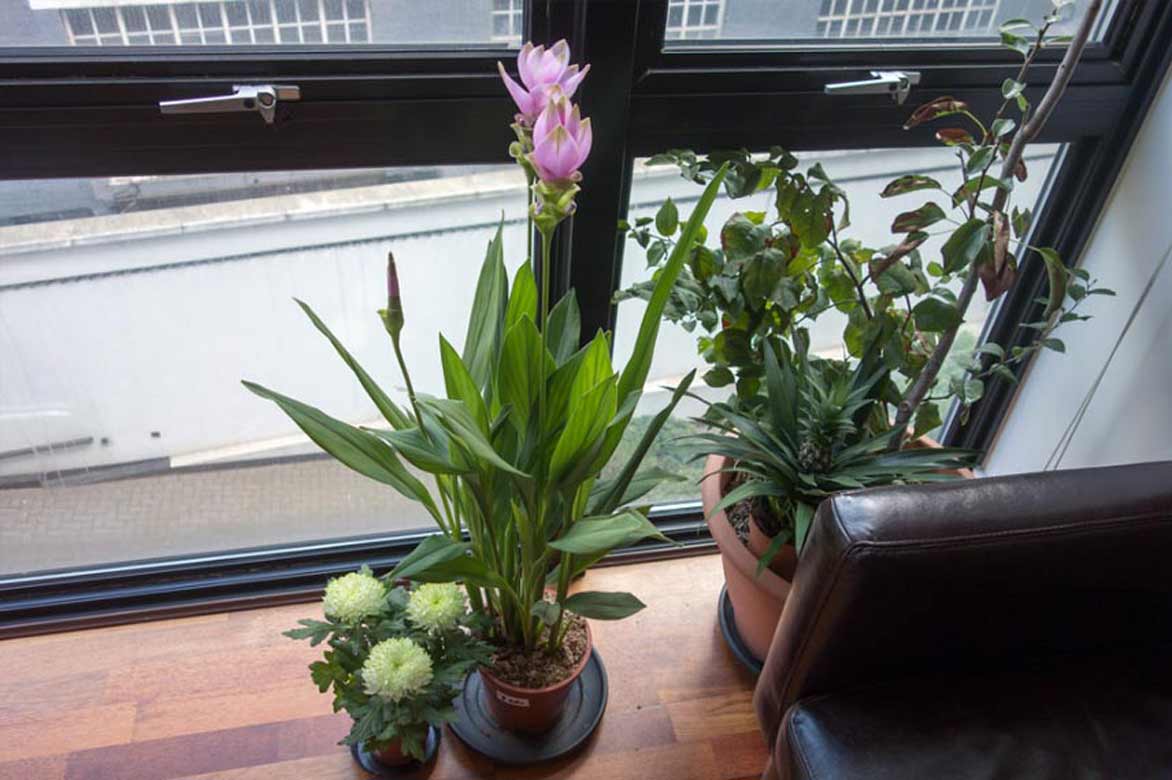
Curcuma in pot © Kent Wang – Flickr
During the growing season, remember to water your Siam tulips regularly, as they do not appreciate dry atmospheres. However, be careful to provide them with well-draining substrate, as stagnant moisture is not beneficial for them.
Diseases and potential pests of turmeric
Turmeric rootstocks are susceptible to rot when exposed to stagnant water. Regarding pests, the emergence of mites is a concern in dry conditions. Be cautious of slugs and snails, which are very fond of young shoots and flower buds of turmeric.
Multiplying turmeric
Turmeric multiplies solely by division of the rootstocks. This is a relatively simple operation that takes place in spring.
- Start by digging up the tubercles from the soil, being careful not to damage them. Gently pull on the turmeric stems to extract the entire rootstocks.
- Once done, divide them with your hands to obtain small pieces of rootstocks without injury.
- Transplant them immediately into fertile, well-drained, and loose soil, in a sunny location. (Refer to the “planting” section on this page).
Tips
- If you cannot plant your freshly divided rootstocks within a few hours, prepare a tray by lining it with newspaper and place them inside. Set the tray in a well-ventilated, dry, and cool area. Be careful not to cover the tray, as air must circulate freely.
- If your rootstocks are damaged, proceed in exactly the same way by placing them in a tray, allowing them time to heal.
Pairing turmeric
The Curcuma longa can be planted alongside Cannas, castor oil plant, and Colocasia for a guaranteed exotic effect. Whether in pots or in the vegetable garden, it easily settles in alongside herbs.
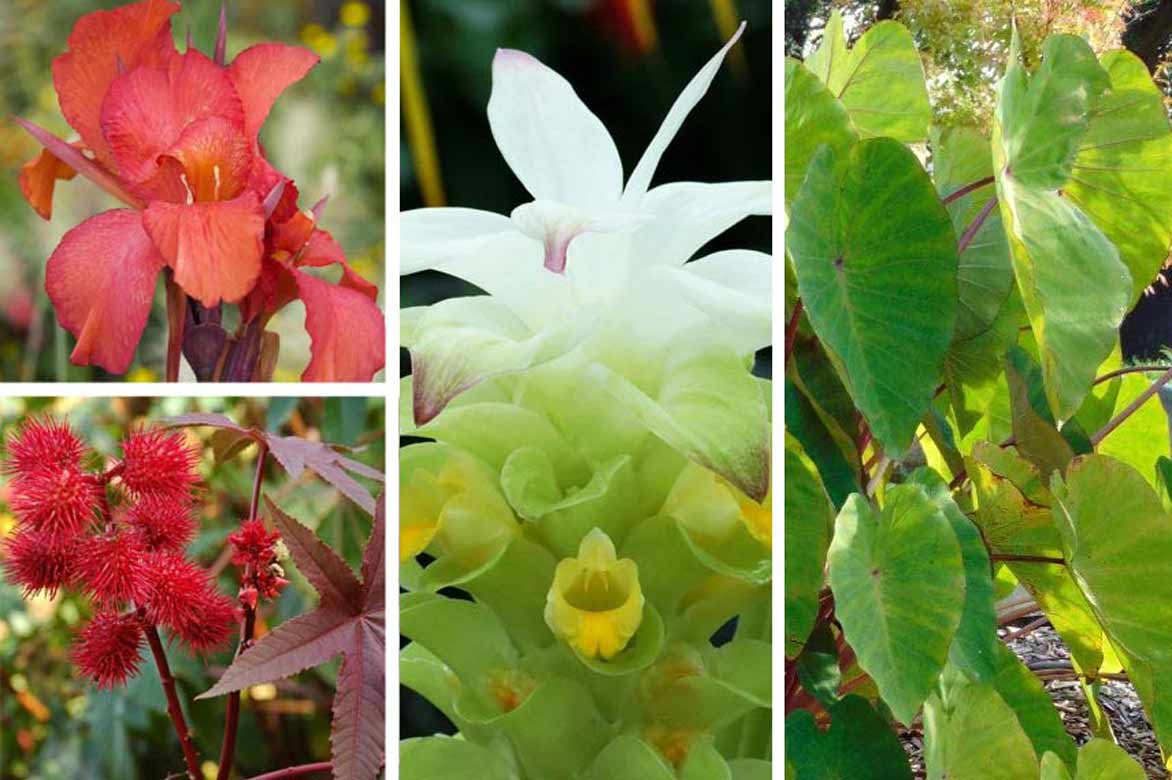
The various cultivars of Curcuma alismatifolia blend very well together. They can also be paired with Amaryllis Ambiance and Cyrtanthus Pink Diamond.
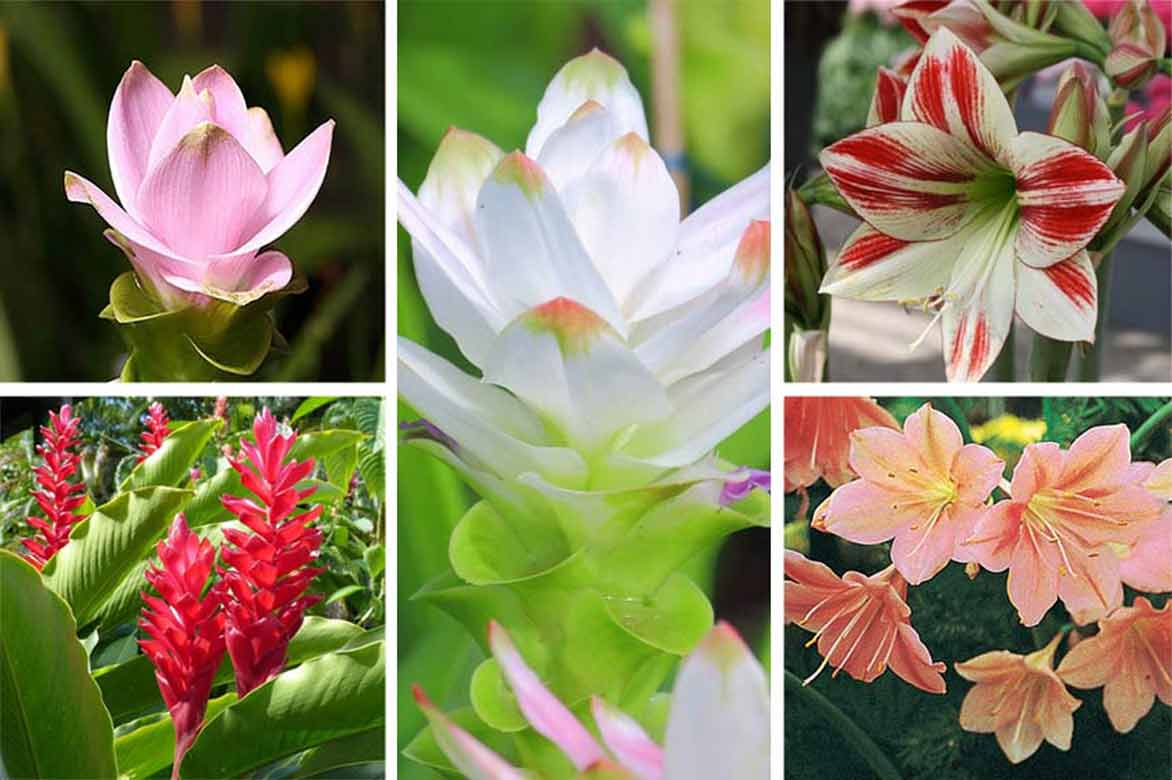
Useful resources
-
Growing turmeric in pots: find all our tips in our article.
- Discover our tutorial: How to harvest and use turmeric in cooking?
-
You can purchase a young plant of Indian saffron, or Siam tulip bulbs, from the Promesse de fleurs online shop!
- Bulbs, rootstocks or tubercles? Learn to tell the difference with our dedicated blog article.
- Gwenaëlle tells you how to harvest and use turmeric in cooking.
- Subscribe!
- Contents

































Comments